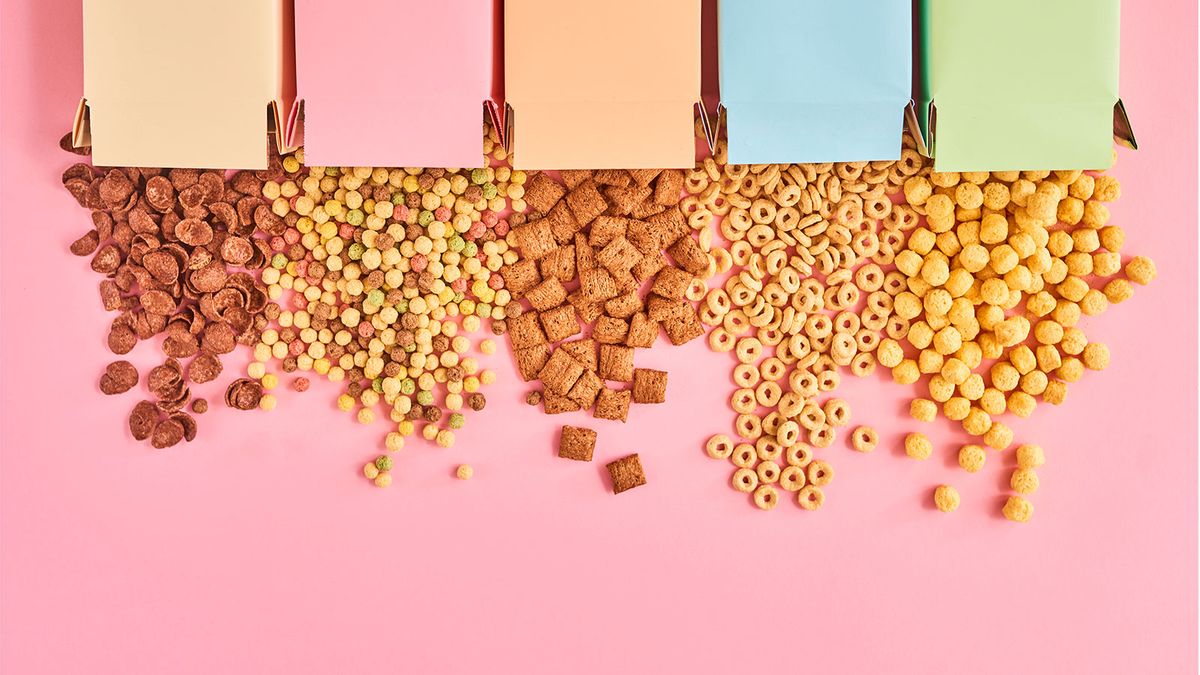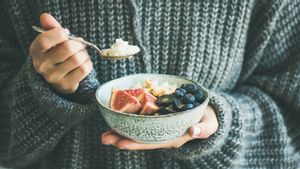They come with different labels—‘Diet’, ‘Natural’, ‘Baked not Fried’, ‘Fat-free’, ‘Low-calorie’ and 'Multigrain'. Each with the promise of being the snack or food that will not only satiate your cravings but also your nutrition needs. But beware, before you load your cart with these healthies, flip them over to read the fine print on the labels and ingredients list. We did the research so you can make healthier choices.
Energy Bars
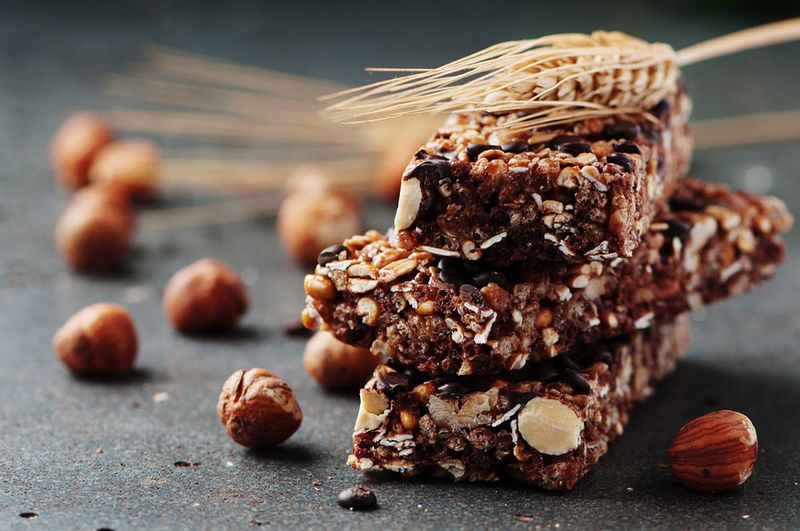
Usually found in the same aisle as chocolates and candies, energy bars are no longer restricted for consumption only by athletes. Marketed as a healthier alternative to chocolates, most people don’t stop to think before replacing a bowl of fruits or nuts with a bar. And why not? It’s tasty and healthy, right? Wrong!
Agreed, energy bars may have ingredients like rice, oats and whole wheat flour, and fortified with vitamins and minerals. But don’t be led by claims, read the nutrition label—most energy bars are also laden with sugar and saturated fats.
We checked three popular energy bars and found that two of them contained corn syrup, which is often used as an alternative to sugar. According to Pune-based nutritionist Maitreyi Bokil, energy bars cannot replace a good wholesome snack but may be an option for times when you run out of food or have to carry a snack with a long shelf life when travelling. “At the end of the day, these are processed food items which may contain ingredients like high fructose corn syrup whose consumption should be limited. They should not be mistaken as “healthy” foods and eaten either over or instead of natural energy-dense foods like dry fruits or nuts and seeds,” says Bokil.
Diet Snacks
Diet snacks give you a false sense of gratification by tricking you into thinking that you are snacking healthy. A closer look at the nutrition label reveals that they contain a high amount of sodium, which according to Harvard School of Public Health, can lead to high blood pressure, stroke, heart disease and heart failure. Though it is mandatory to mention ingredients and nutrition count on all packaged products, locally manufactured diet snacks may lack these—another reason to stay off dubious ‘diet’ snacks. Celebrity nutritionist Rujuta Diwekar in her book, Don’t lose your mind, lose your weight, advises against the consumption of diet snacks and explains how we end up overeating these snacks, thinking they won’t add an extra pound.
Flavoured Makhanas

Makhanas are a great snack option when they don’t come out of a packet! Just toss the plain unsalted makhanas in a little ghee and season with salt and pepper. But watch out if you’re eating them off a packet of some new-fangled flavour marketed as “healthy, air popped” fox nuts. According to Bokil, salt, sugar and fat are three ingredients that you should watch out for. “Fat carries flavour and commercial companies are always looking at ways to enhance the flavour of their product. Sometimes one serving of 100 grams has over 20 grams of fat which is almost equal to 4 teaspoons of oil. For someone on a weight loss diet, 4 teaspoons could be their oil allowance for the entire day. The second item to watch out for is salt which is also a taste enhancer and is liberally added to commercial products to enhance taste and for preservation. Sugar can be the third culprit but fat and salt are the greater culprits in case of makhanas,” she says.
Breakfast Cereals

Breakfast cereals are convenient, but are they as healthy as you believe them to be? According to Healthline.com, “Breakfast cereal is made from refined grain, often by the process of extrusion (a high-temperature process that uses a machine to shape the cereal). It is highly processed and many ingredients are added.” Because of the nutrient losses that occur due to processing, manufacturers have to fortify these cereals with vitamins and minerals. “Many popular cereal options available in the market today are loaded with sugar, HFCS and preservatives.” Bokil points out. “The better cereals are those containing more fibre than sugar per serving. Choose a cereal that has fewer ingredients, with whole grains being the first ingredient. Whole wheat, jowar or ragi flakes muesli—are a better option compared to corn flakes or sweetened fruit loops. Unsweetened cereal options are a better breakfast option for kids as they come fortified with vitamin D, vitamin B12, iron and other vitamins and minerals.”. So don’t pick breakfast cereals only because they scream out “whole grain” to you.
Popcorn
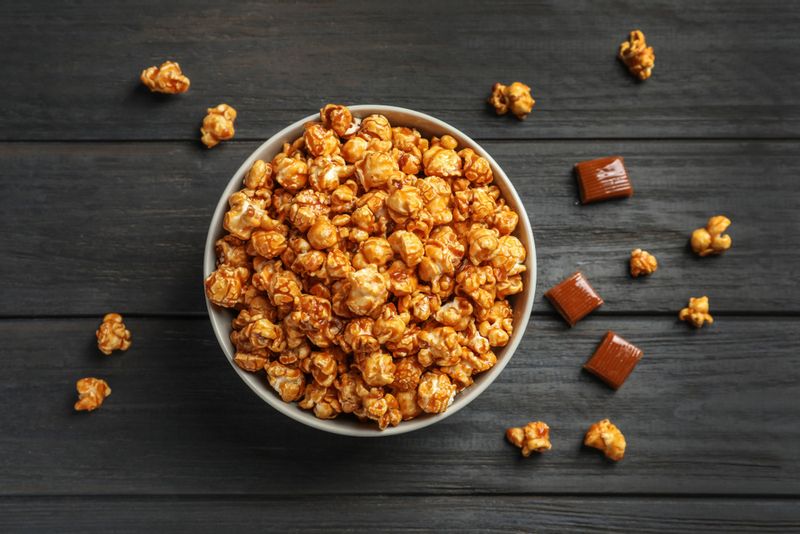
Just like makhanas, the way popcorn is prepared determines how healthy (or fattening) it is. Pop them from dried corn kernels, and sprinkle with salt—and you have a great snack to munch on. Binge on flavoured, or instant popcorn, it’s laden with palm oil and sodium!
According to Bokil, “Popcorn available in movie theatres is loaded with salt, sugar (via syrups) and fat (via butter). One cup of dry, unbuttered popcorn is 30 kcal. A regular size popcorn at the movies can be anywhere from 5 to 6 cups which increases the calories to 150-180 kcal. The calorie count of buttered popcorn of the same size is over 300 kcal with 30 grams of fat. If you add caramel syrup over it, the calorie count increases by 45 kcal per tablespoon. In this manner, with an increase in size, there is an increase in calories, sugar, salt and fat which makes movie theatre popcorn an unhealthy option.”
The caramel popcorn may contain high fructose corn syrup (HFCS) which is much sweeter than glucose or regular sugar, and detrimental to health. “Increase in HFCS is directly related to increase in insulin resistance,” adds Bokil. Make sure you check the nutrition labels before buying the pre-popped popcorn at stores.
Digestive Biscuits
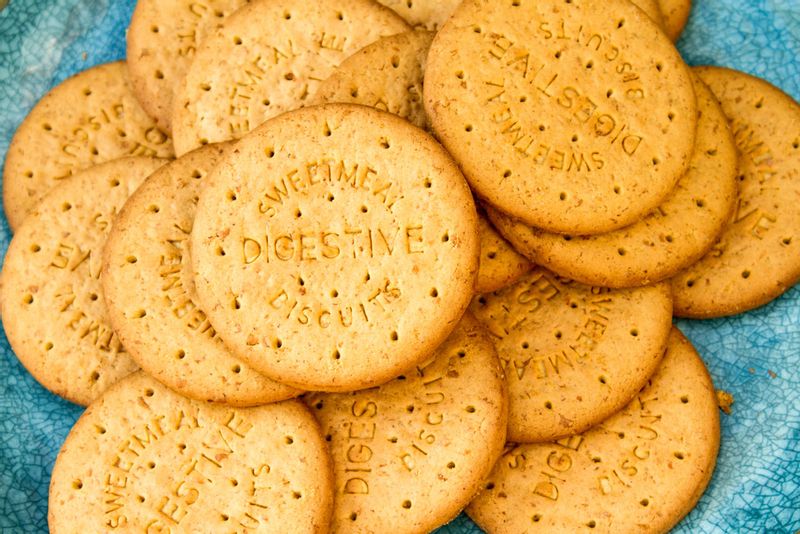
The term ‘digestive’ may mislead you into thinking that they are good for your gut but is it really true? Digestive biscuits may claim to be rich in fibre, but did you know that they contain refined flour and vegetable/palm oil? Bokil opines that biscuits, in general, are unhealthy. “McVities digestive biscuit contains 71 kcal per biscuit which weighs 15 grams with around 10 grams of carbohydrate (mainly from sugar and flour), 3 grams of fat and about 1 gram of protein and 0.5 gram of fibre. A Parle-G biscuit weighs approximately 4 grams per biscuit and contains 16 kcal, 10 grams of carbohydrate (mainly from sugar and refined flour) and almost no fat, fibre and protein. So technically, a digestive is marginally better than Parle-G as it has some amount of fibre, but people are likely to eat more of the digestive biscuits thinking they are “healthy”. So essentially, biscuits are unhealthy and should be eaten as an occasional treat, she suggests.
Whole wheat / Multigrain bread
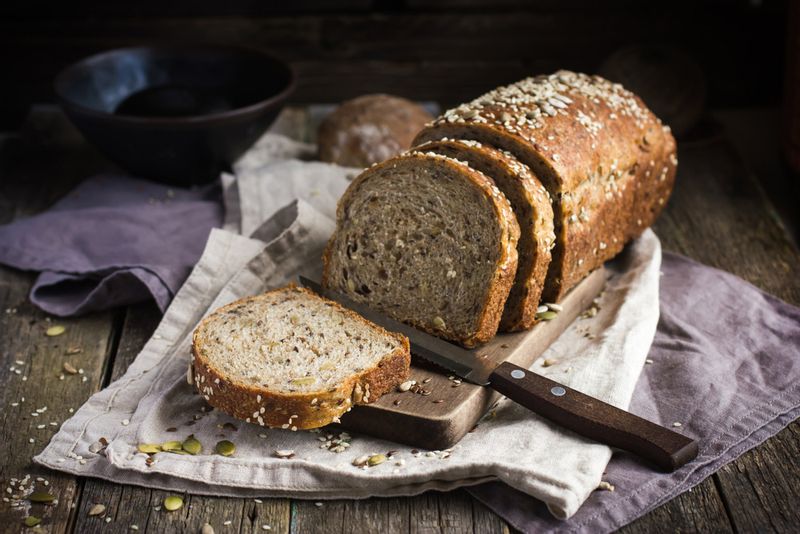
From white, brown, wholewheat, to multigrain—and a wide variety in between—the choice of bread is vast. And then there are breads with millet flour, oats, and seeds. Does that make them a healthier choice? Think again! Medical News Today, a UK based website for medical news, suggest that “MERE labels like “multigrain”, “wheat bread” or “bran” do not ensure a 100% whole grain product”.
Sample this: The calorific difference between brown and white bread is a mere 5 kcal! 100 grams of brown bread is 244 kcal while white bread is 245kcal. So why do we assume brown is healthier? Partly because we’re sold to the idea that brown equals to whole food. Also, store-bought bread contains added sugars, salt, palm oil and preservatives.
Not much difference is seen in the glycaemic index of whole wheat bread and white bread. “Both whole wheat and white bread have Glycaemic index ranking of > 70,” adds Bokil. Glycaemic Index is the unit for a spike in blood sugar level when you eat a certain food—processed sugar and flour lead to a sharp spike in blood sugar. Whole foods that have fibre slow down the release of sugar making them a healthier option.
Flavoured Yoghurt
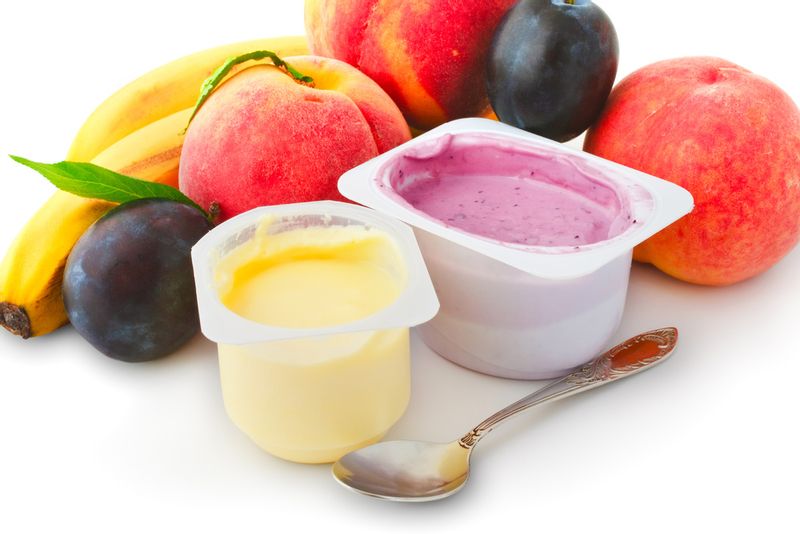
The importance of probiotics for gut health has put yoghurt in the good books. Manufacturers are coming up with flavoured varieties in an attempt to improve palatability. And that’s precisely where the problem begins. Typically, a can of yoghurt which is supposed to be one serving contains 16 grams of sugar. And if it contains toppings like cookies, granola or dehydrated fruits, it piles on more sugar. “The high sugar content can lead to a spike in insulin levels,” says Bokil. A healthier option is to choose plain yoghurt and add fresh fruits or nuts to it.
Instant Oats

Oats are a good source of fibre, contain 5.1 grams of protein for 100 grams, and vitamins and minerals. So yes, oats are a good option, but not when they are flavoured and loaded with sodium, and sugar. According to a report titled “Is instant oatmeal even worth eating?” shared by Huffington Post “some of those instant oats can house just as much sugar as your favourite baked goods!” We checked the nutrition label of a popular strawberry flavoured instant oats and found that a single-serving packet contains 12 grams of sugar and just 2 grams of dietary fibre! Moreover, it also contains palm oil and artificial flavours which negate the nutritional benefits of oats. The healthier option is use plain oats which can be used in a number of recipes.
Cold-pressed juices

Cold-pressed juices are the trend in the health industry. Their USP- nutrient retention and preservative free. While it is true that cold pressing prevents loss of nutrients there are still speculations regarding its health benefits. Wired .com explains how nutrient retention does not necessarily guarantee its absorption by the body. They also explain how “cold pressing’s lack of heat isn’t always a good thing” by giving the example of lycopene found in tomatoes, which after going through the heat treatment are better absorbed by the gut. Moreover, if you look closely a few of them may contain added sugar, as much as 28 grams per 250ml. When you are gulping down this juice, you are consuming about 100 kcal just from sugar! Another loss is of fibre. A few brands do boast of retaining the fibre, but most of them do away with it, which results in reduced benefits. “They do contain vitamins and minerals,” agrees Bokil,” but if you are already eating a well-balanced diet then these juices are only a source of extra carbohydrates and calories.”
The best thing to do? Just munch on the whole fruit.


